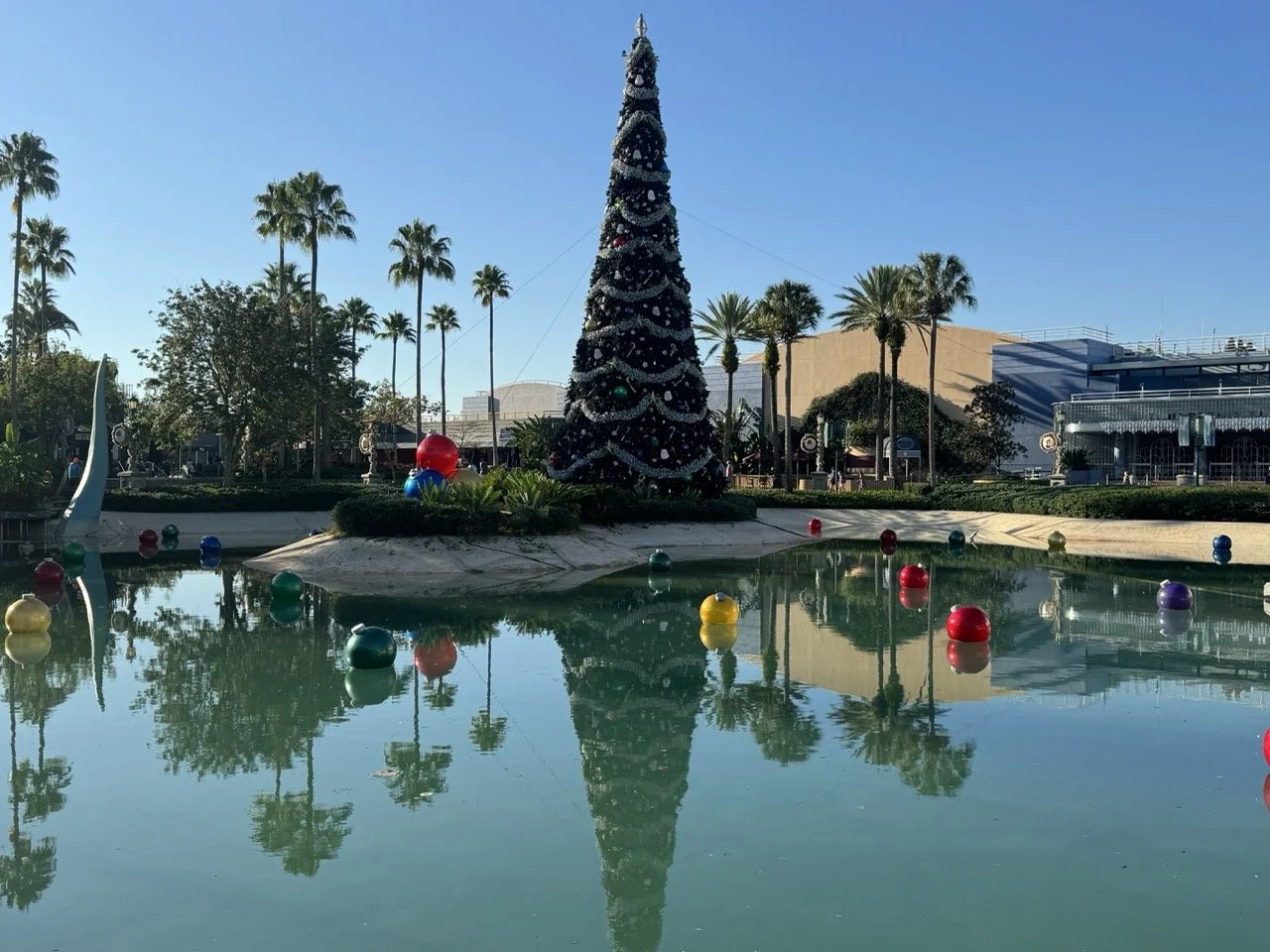Travel Agent Acronyms: Your Complete Guide to Industry Lingo
Look, I get it. You're scrolling through a travel agent job posting or supplier email and suddenly it's like everyone's speaking a different language. CLIA this, GDS that, and wait—what on earth is a PAX? Don't worry, you're not alone. The travel industry loves its acronyms, and honestly, it can feel like you need a decoder ring just to understand your first week on the job!
But here's the thing: once you crack this code, you'll realize these acronyms aren't just random letters—they're your keys to unlocking the entire travel industry. They help you book faster, communicate clearer, and honestly, sound like you know what you're doing when you're chatting with suppliers or fellow agents.
So grab your coffee (or tea, no judgment), and let's break down every travel agent acronym you need to know. I promise to keep it simple, practical, and way more interesting than reading a dictionary! Put your new terms to use, join MainStreet Travel today with our Free membership or Travel Plus membership for only $99!
Why Travel Agent Acronyms Matter
Before we dive into the alphabet soup, let's talk about why these acronyms exist in the first place.
The travel industry moves fast. Really fast. When you're booking flights, coordinating hotels, managing cruise reservations, and handling customer questions all at once, you need shorthand. These acronyms save time and create a universal language that travel professionals around the world understand.
Think of it like texting slang, but for your career. Just like "BRB" or "LOL" make texting faster, acronyms like "FAM" and "PNR" make travel booking more efficient. Plus, knowing these terms instantly signals to suppliers, colleagues, and clients that you're a legit professional who knows the biz.
Essential Accreditation Acronyms
Let's start with the big ones—the accreditation acronyms that define how you operate as a travel agent.
ARC (Airlines Reporting Corporation)
What it means: ARC is basically the financial middleman between travel agencies and airlines in the United States. If you want to issue airline tickets through the GDS system, you need an ARC number.
Why it matters: Your ARC number is like your travel agency's social security number. It's how suppliers identify you and how the money flows between you and the airlines. Without it, you can't issue airline tickets directly.
The catch: ARC accreditation has strict requirements including financial qualifications, surety bonds, and specific business structures. It's powerful but comes with responsibilities.
IATA (International Air Transport Association)
What it means: IATA is the global version of ARC. It's an international trade association that sets standards for airlines worldwide.
Why it matters: If you're outside the United States or work with international travel, IATA accreditation opens doors to global suppliers. Your IATA number is recognized worldwide and gets you access to commissions and benefits from international airlines and travel companies.
Fun fact: In the US, your ARC and IATA numbers are actually the same eight-digit number. They work together, which makes life easier.
IATAN (International Airlines Travel Agent Network)
What it means: IATAN is the program that issues those coveted travel agent ID cards that get you access to FAM trips and travel discounts.
Why it matters: The IATAN card is your golden ticket to industry benefits. Think discounted hotels, reduced airfare, FAM trips, and professional recognition worldwide. To qualify, you typically need to show you've earned at least $5,000 in commissions within 12 months and work at least 20 hours per week as a travel agent.
Real talk: Getting your IATAN card feels like a rite of passage. It's proof you've made it as a professional travel agent.
CLIA (Cruise Lines International Association)
What it means: CLIA is the cruise industry's main accreditation organization. They issue CLIA numbers (also called EMBARC IDs) to travel agents who sell cruises.
Why it matters: If you're selling cruises (and let's be honest, who isn't?), CLIA membership is essential. It gives you access to cruise line commissions, educational resources, professional certifications, and that all-important CLIA number that cruise lines recognize.
The good news: CLIA is easier to get than ARC or IATA, and it works for all travel types except airline-only tickets. Many agents start with CLIA before moving to other accreditations.
TRUE (Travel Retailer Universal Enumeration)
What it means: TRUE is an accreditation administered by CCRA (Computerized Corporate Rate Association) that gives independent travel agents a unique identification code.
Why it matters: TRUE is perfect for travel agents who focus on cruises, tours, and boutique suppliers. It's more flexible than ARC and works with smaller tour operators and DMCs that other accreditations might not cover.
The setup: TRUE accreditation costs $399 annually and covers up to 25 travel agents. You need at least six months of travel selling experience and proof of a legal business structure.
ASTA (American Society of Travel Advisors)
What it means: ASTA is the world's largest trade association for travel agents and advisors. It's not an accreditation per se, but membership provides advocacy, education, and networking.
Why it matters: ASTA represents more than 2,600 travel agencies and suppliers. Membership shows clients you're committed to ethical practices and professional standards. Plus, you get access to training, industry events, and resources to grow your business.
Booking and Distribution Acronyms
Now let's get into the nuts and bolts of actually booking travel.
GDS (Global Distribution System)
What it means: A GDS is like the massive computer brain that connects airlines, hotels, car rental companies, and travel agencies. The big three are Amadeus, Sabre, and Travelport.
Why it matters: If you've ever wondered how travel agents search and book flights from multiple airlines at once, it's through the GDS. It's real-time inventory that updates constantly, showing you what's available right now.
How it works: Think of GDS as the Amazon of travel. Instead of visiting each airline's website separately, you log into the GDS and search everything in one place. It's fast, powerful, and industry-standard.
CRS (Computer Reservation System or Central Reservation System)
What it means: A CRS is the individual reservation system that hotels, airlines, and other travel providers use to manage their own inventory.
Why it matters: While a GDS connects multiple suppliers, a CRS is specific to one company. For example, Marriott has its own CRS that manages room inventory across all Marriott properties.
The difference: GDS connects you to many suppliers; CRS is one supplier's internal system. They work together to make bookings happen.
PNR (Passenger Name Record)
What it means: A PNR is the digital file created when you book travel. It contains all the passenger details, itinerary information, special requests, and booking information.
Why it matters: Every booking has a PNR with a unique six-character code (like ABC123). This code lets you access, modify, or cancel reservations. When a client calls asking about their trip, you pull up their PNR.
Pro tip: The PNR code might also be called a "booking reference" or "record locator," but it's the same thing. Keep these handy because they're essential for managing travel.
API (Application Programming Interface)
What it means: An API is the technology that allows different software systems to talk to each other and share data.
Why it matters: APIs are what make modern travel websites work. When you search for a hotel on your website, an API pulls that information from the hotel's system and displays it to your customer—all in seconds.
Translation: APIs are like translators that help different computer systems understand each other. They make integration possible.
NDC (New Distribution Capability)
What it means: NDC is a modern data transmission standard developed by IATA that lets airlines offer richer, more personalized content directly to travel agents and customers.
Why it matters: NDC is changing the game. It allows airlines to showcase their products with better visuals, dynamic pricing, and personalized offers beyond what traditional GDS can provide.
The future: More and more airlines are pushing NDC adoption because it gives them better control over how their products are sold. As a travel agent, understanding NDC means you're ahead of the curve.
Travel Types and Passenger Acronyms
Let's talk about the different types of travelers and travel styles you'll encounter.
FIT (Fully Independent Traveler or Free Independent Tourist)
What it means: FIT refers to individual travelers or small groups who want customized itineraries—not pre-packaged group tours.
Why it matters: FIT bookings require more personalization and planning. These travelers want unique experiences tailored to their preferences, which means you're creating custom packages rather than selling existing tours.
Your role: When you're working with FIT clients, you're essentially designing one-of-a-kind trips. It's more work but often more rewarding (and profitable).
PAX (Passengers)
What it means: PAX is industry shorthand for "passengers" or "guests." If someone says "3 PAX," they mean three people.
Why it matters: You'll see PAX everywhere—on booking confirmations, tour manifests, hotel BEOs (Banquet Event Orders), and supplier quotes. It's one of the most common terms in travel.
Usage: "We have 20 PAX confirmed for the Jamaica trip" simply means 20 passengers are booked.
OTA (Online Travel Agency)
What it means: An OTA is a travel agency that operates entirely online, like Expedia, Booking.com, or Priceline.
Why it matters: OTAs are both competition and sometimes partners. They use booking engines that let travelers search and book without talking to a human agent. Understanding OTAs helps you position your personalized services as more valuable than DIY booking.
MICE (Meetings, Incentives, Conferences, and Exhibitions)
What it means: MICE refers to the lucrative corporate and business events travel sector.
Why it matters: MICE bookings are often large-scale, high-value contracts. If you can break into MICE travel, you're looking at corporate meetings, incentive trips for employees, conferences, and trade shows.
The opportunity: MICE travel is a specialized niche with huge revenue potential. These bookings involve multiple services—flights, hotels, meeting spaces, catering, and ground transportation.
Supplier and Destination Acronyms
These acronyms help you navigate relationships with suppliers and destination services.
DMC (Destination Management Company)
What it means: A DMC is a local company in a destination that provides on-the-ground services like tours, transportation, activities, and logistics.
Why it matters: DMCs have deep local knowledge and established supplier relationships. When you're planning a trip to Italy, you might partner with an Italian DMC to handle local tours, restaurant reservations, and transfers.
The benefit: DMCs do the heavy lifting in destinations you might not know intimately. They're your local experts and problem-solvers.
DMO (Destination Marketing Organization)
What it means: A DMO is an organization that promotes tourism to a specific destination. Think tourism boards or convention and visitors bureaus.
Why it matters: DMOs provide marketing materials, destination information, and sometimes even FAM trip opportunities. They want to attract more visitors, which means they're great resources for travel agents.
CVB (Convention and Visitors Bureau)
What it means: A CVB is essentially a type of DMO that focuses on attracting meetings, conventions, and group travel to a city or region.
Why it matters: If you're booking group travel or MICE events, CVBs are incredibly helpful. They can connect you with hotels, venues, and services in their area.
BDM (Business Development Manager)
What it means: A BDM is a supplier representative who works to build relationships with travel agents and increase sales for their brand.
Why it matters: Your BDM is your go-to person at a supplier. They can help with special requests, provide training, offer promotions, and generally make your life easier. Building good relationships with BDMs is crucial.
Travel Experience Acronyms
These acronyms describe different types of travel experiences and trip elements.
FAM Trip (Familiarization Trip)
What it means: A FAM trip is a heavily discounted or complimentary trip for travel agents to experience a destination, hotel, or cruise ship firsthand.
Why it matters: FAM trips are one of the best perks of being a travel agent. You get to experience destinations so you can sell them more effectively. When you've personally stayed at a resort or sailed on a cruise ship, you can give authentic recommendations.
Types of FAMs: There are working FAMs (fast-paced, lots of site visits), experiential FAMs (more relaxed, immersive), and award FAMs (fully comped trips for top producers).
AI (All-Inclusive)
What it means: AI means all-inclusive, typically referring to resorts where meals, drinks, activities, and gratuities are included in one price.
Why it matters: All-inclusive resorts are incredibly popular, especially in the Caribbean and Mexico. Understanding what's included (and what's not) helps you set proper client expectations.
Sales tip: AI resorts are easier to sell because clients know their total cost upfront—no surprise bills at the end.
ADR (Average Daily Rate)
What it means: ADR is a hotel industry metric that shows the average revenue earned per occupied room per day.
Why it matters: While this is more of a hotel management term, understanding ADR helps you grasp pricing strategies and negotiate better rates for your clients.
RevPAR (Revenue Per Available Room)
What it means: RevPAR measures hotel performance by calculating revenue per available room, whether occupied or not.
Why it matters: Like ADR, RevPAR is an industry metric that helps you understand hotel performance and pricing. Hotels use it to measure success and set rates.
Transportation and Security Acronyms
Travel involves lots of moving parts, and these acronyms help you navigate transportation and security.
TSA (Transportation Security Administration)
What it means: TSA is the U.S. government agency responsible for security at airports and transportation systems.
Why it matters: Your clients will deal with TSA screenings at airports. Understanding TSA regulations helps you advise clients on what they can pack, how early to arrive, and what to expect at security checkpoints.
Hot tip: TSA PreCheck is a huge travel perk that gets passengers through security faster. Educating clients about it adds value to your service.
CXR (Carrier)
What it means: CXR is airline industry speak for "carrier," which just means airline.
Why it matters: You'll see CXR in GDS systems and booking documentation. It's simply shorthand for which airline is operating a flight.
OW (One Way)
What it means: OW indicates a one-way ticket or itinerary.
Why it matters: Knowing whether you're booking OW or RT (round trip) tickets affects pricing and availability.
RT (Round Trip)
What it means: RT means round trip—flying from Point A to Point B and back to Point A.
Why it matters: Round trip fares are often cheaper than two one-way tickets, but not always. Understanding fare structures helps you find the best deals.
ESTA (Electronic System for Travel Authorization)
What it means: ESTA is the online system that determines if travelers from certain countries can enter the United States under the Visa Waiver Program.
Why it matters: If you're booking U.S. travel for international clients, you need to know about ESTA requirements. Clients must apply at least 72 hours before travel.
FAA (Federal Aviation Administration)
What it means: The FAA is the U.S. agency that regulates civil aviation, including safety standards and air traffic control.
Why it matters: While you won't interact with the FAA directly, understanding their role helps you stay informed about flight regulations, delays, and safety issues.
Hotel and Accommodation Acronyms
Hotels have their own language, and these acronyms help you navigate room types and amenities.
B&B (Bed and Breakfast)
What it means: A B&B is a small lodging establishment that offers overnight accommodations and breakfast.
Why it matters: B&Bs provide intimate, personalized experiences that many travelers love. They're different from hotels and require different expectations.
BAR (Best Available Rate)
What it means: BAR is the best publicly available room rate at a hotel for a specific date, without special discounts.
Why it matters: BAR serves as the baseline for hotel pricing. Any negotiated rate or discount is typically compared to BAR.
OCC (Occupancy)
What it means: OCC refers to the occupancy rate—the percentage of hotel rooms that are occupied.
Why it matters: Understanding occupancy helps you gauge demand. High occupancy might mean limited availability and higher prices.
Financial and Booking Terms
Money makes the travel world go round, so these financial acronyms are essential.
NR (Non-Refundable)
What it means: NR indicates that a fare or booking cannot be refunded if canceled.
Why it matters: Always clarify refund policies with clients. NR bookings might allow changes for a fee but won't give money back if canceled.
Client communication: Make sure clients understand that NR means they lose their money if plans change. It's worth explaining travel insurance in these situations.
RFP (Request for Proposal)
What it means: An RFP is a formal request sent to suppliers asking them to submit proposals and pricing for services.
Why it matters: RFPs are common in group travel and MICE bookings. You send detailed requirements to multiple hotels or suppliers and compare their responses.
GMT (Greenwich Mean Time)
What it means: GMT is the solar-based time standard from Greenwich, England that all world time zones reference.
Why it matters: Time zones affect flight schedules and booking confirmations. Understanding GMT helps you avoid confusion when booking international travel.
Professional Development Acronyms
These acronyms relate to certifications and professional growth.
CTC (Certified Travel Consultant)
What it means: CTC is a professional certification offered by The Travel Institute that demonstrates advanced knowledge and experience.
Why it matters: Professional certifications like CTC boost your credibility with clients and show your commitment to the profession.
ACC (Accredited Cruise Counsellor)
What it means: ACC is a CLIA certification for cruise specialists who have completed advanced training.
Why it matters: If you specialize in cruises, ACC certification sets you apart as an expert and opens up more opportunities with cruise lines.
VTA (Verified Travel Advisor)
What it means: VTA is ASTA's professional certification that demonstrates knowledge, professionalism, and industry dedication.
Why it matters: VTA certification requires minimum experience, sales success, and continuing education. It's a mark of excellence in the industry.
Group Travel and Tour Acronyms
If you work with groups, these acronyms are your daily language.
NTA (National Tour Association)
What it means: NTA is a trade association for tour operators and travel professionals who focus on group travel.
Why it matters: NTA membership connects you with tour operators, destinations, and suppliers who specialize in group travel.
SAS (Seminar at Sea)
What it means: SAS refers to short cruise trips designed specifically for travel agents to learn about cruise ships and services.
Why it matters: SAS trips are educational FAMs focused on cruising. They include training sessions and ship tours so you can better sell cruise products.
GLAMER (Group Leaders of America)
What it means: GLAMER is an organization that connects tour operators with group leaders and motorcoach companies.
Why it matters: If you're booking group tours or motorcoach travel, GLAMER connections can be valuable resources.
Emerging and Modern Travel Acronyms
The travel industry keeps evolving, and these newer acronyms reflect current trends.
OBT (Online Booking Tool)
What it means: An OBT is a web-based platform that helps travel agents manage bookings, policies, and supplier contracts.
Why it matters: OBTs streamline your workflow by centralizing booking processes and making it easier to track policies and compliance.
TMC (Travel Management Company)
What it means: A TMC is a company that specializes in managing corporate travel programs for businesses.
Why it matters: TMCs handle everything from booking to policy enforcement to data analytics for corporate clients. If you want to break into corporate travel, understanding TMCs is essential.
LCC (Low-Cost Carrier)
What it means: LCC refers to budget airlines like Southwest, Spirit, or Ryanair that offer lower fares with fewer amenities.
Why it matters: LCCs operate differently than full-service carriers. Understanding their policies helps you set proper client expectations about baggage fees, seat selection, and service.
SSR (Special Service Request)
What it means: An SSR is a request in the GDS for additional services like special meals, wheelchair assistance, or extra baggage.
Why it matters: SSRs ensure your clients get the accommodations they need. Knowing how to enter SSRs in the GDS is essential for providing excellent service.
OSI (Other Service Information)
What it means: OSI is information entered in the GDS that doesn't require action but provides helpful context—like family traveling together or contract discount codes.
Why it matters: OSI notes help ensure smooth travel by providing important details to airlines and suppliers.
Quick Reference: The Most Common Travel Agent Acronyms
Here's your cheat sheet for the acronyms you'll encounter most often:
Accreditation & IDs:
ARC: Airlines Reporting Corporation
IATA: International Air Transport Association
IATAN: International Airlines Travel Agent Network
CLIA: Cruise Lines International Association
TRUE: Travel Retailer Universal Enumeration
ASTA: American Society of Travel Advisors
Booking & Systems:
GDS: Global Distribution System
CRS: Computer Reservation System
PNR: Passenger Name Record
API: Application Programming Interface
NDC: New Distribution Capability
People & Travel Types:
PAX: Passengers
FIT: Fully Independent Traveler
OTA: Online Travel Agency
MICE: Meetings, Incentives, Conferences, Exhibitions
Suppliers & Destinations:
DMC: Destination Management Company
DMO: Destination Marketing Organization
CVB: Convention and Visitors Bureau
BDM: Business Development Manager
Experiences & Trips:
FAM: Familiarization Trip
AI: All-Inclusive
ADR: Average Daily Rate
RevPAR: Revenue Per Available Room
Transportation:
TSA: Transportation Security Administration
FAA: Federal Aviation Administration
CXR: Carrier
OW: One Way
RT: Round Trip
Financial:
NR: Non-Refundable
RFP: Request for Proposal
BAR: Best Available Rate
Frequently Asked Questions About Travel Agent Terms
What does CLIA stand for in travel?
CLIA stands for Cruise Lines International Association. It's the main accreditation organization for travel agents who sell cruises. With a CLIA number (also called an EMBARC ID), you can access cruise line commissions, educational resources, and industry recognition. CLIA membership is essential if you're selling cruises and opens doors to FAM trips and supplier relationships.
What's the difference between ARC and IATA?
ARC (Airlines Reporting Corporation) is specifically for U.S.-based travel agencies and handles financial transactions between agencies and airlines. IATA (International Air Transport Association) is the global airline trade organization. If you're in the U.S., your ARC and IATA numbers are the same eight-digit code. The key difference is that ARC focuses on U.S. operations while IATA provides global recognition and standards.
What is a GDS and why do I need it?
A GDS (Global Distribution System) is the computer network that connects travel agencies to airlines, hotels, car rental companies, and other suppliers. The main GDS systems are Amadeus, Sabre, and Travelport. You need GDS access to search and book travel from multiple suppliers in real time. It's the backbone of professional travel booking, allowing you to compare options and make reservations all in one system.
What does PAX mean in travel terms?
PAX is shorthand for "passengers" or "guests." It's one of the most common acronyms in the travel industry. When someone says "10 PAX," they mean 10 people. You'll see PAX on booking confirmations, tour manifests, hotel event orders, and supplier quotes. It's universally understood across the industry and makes communication faster.
What's a FAM trip and how do I get invited?
FAM stands for "familiarization trip," which is a discounted or complimentary trip that suppliers offer to travel agents so they can experience destinations, properties, or cruise ships firsthand. To get invited to FAM trips, build relationships with BDMs (Business Development Managers), join industry associations like ASTA or CLIA, attend travel conferences, and demonstrate solid sales in specific niches. Top-producing agents often get access to the best FAMs.
What does FIT mean in the travel industry?
FIT stands for "Fully Independent Traveler" or "Free Independent Tourist." It refers to individual travelers or small groups who want customized, personalized itineraries rather than pre-packaged group tours. FIT bookings require more planning and customization but often result in higher commission and more satisfied clients who appreciate the personalized service.
What's the difference between a DMC and a DMO?
A DMC (Destination Management Company) is a local company that provides on-the-ground services like tours, transportation, and activities in a specific destination. They execute the actual travel experience. A DMO (Destination Marketing Organization) is an organization that promotes tourism to a destination—think tourism boards or visitors bureaus. DMCs handle logistics; DMOs handle marketing and promotion.
How do I get my IATAN card?
To get an IATAN card, you need to meet specific requirements: earn at least $5,000 in commissions paid to you within a consecutive 12-month period, work at least 20 hours per week as a travel agent, and be affiliated with an IATA-accredited agency or host. Once you meet these requirements, your host agency or employer can request your IATAN card, which gives you access to industry discounts, FAM trips, and global recognition.
What is NDC and why should I care?
NDC (New Distribution Capability) is a modern data standard developed by IATA that allows airlines to offer richer, more personalized content and dynamic pricing directly to travel agents and customers. Unlike traditional GDS, NDC provides better visuals, ancillary services, and customized offers. Airlines are increasingly pushing NDC adoption, so understanding it positions you for the future of airline distribution.
What does MICE travel mean?
MICE stands for Meetings, Incentives, Conferences, and Exhibitions. It's the corporate and business events sector of travel. MICE bookings are typically large-scale and involve coordinating meetings, incentive trips for employees, conferences, and trade shows. This niche is highly lucrative and requires specialized knowledge of group bookings, venues, and corporate needs.
What's the difference between a CRS and a GDS?
A CRS (Computer Reservation System) is the internal reservation system that an individual company (like a hotel chain or airline) uses to manage their own inventory. A GDS (Global Distribution System) connects travel agencies to multiple suppliers' CRS systems. Think of it this way: each hotel chain has its own CRS, but the GDS aggregates access to all of them in one place for travel agents.
What does TRUE accreditation get me?
TRUE (Travel Retailer Universal Enumeration) accreditation gives you a unique identification code recognized by travel suppliers. It's especially valuable for agents who focus on cruises, tours, and boutique suppliers. TRUE costs $399 annually, covers up to 25 agents, and offers flexibility to work with smaller tour operators and DMCs. It's a great alternative to ARC/IATA for agents who don't focus on airline ticketing.
What is a PNR number?
A PNR (Passenger Name Record) number is the unique six-character code assigned to a booking when you make a reservation. It's the digital record that contains all passenger details, itinerary information, special requests, and booking data. You use the PNR number to access, modify, or cancel reservations. It might also be called a "booking reference" or "record locator."
What does TSA PreCheck mean for my clients?
TSA PreCheck is a program that lets approved travelers go through expedited security screening at U.S. airports. Clients pay an $85 fee, complete a background check, and get a Known Traveler Number that's good for five years. With PreCheck, they can keep shoes, belts, and light jackets on, and leave laptops and liquids in their bags. It's a huge time-saver and client convenience you should recommend.
What's an API in travel technology?
API stands for Application Programming Interface. It's the technology that allows different software systems to communicate and share data. In travel, APIs power everything from flight searches to hotel bookings on websites. When your website displays hotel availability, an API is pulling that data from the hotel's system in real time. APIs make integration and automation possible.
Mastering the Language of Travel
Whew! That was a lot, right? But here's what I want you to remember: these acronyms aren't meant to confuse you—they're designed to make communication faster and more efficient once you understand them.
Think of learning travel acronyms like learning any new language. At first, it feels overwhelming. Then suddenly, one day, you realize you're using them naturally without even thinking about it. You'll casually mention "booking a FAM to check out that AI resort" or "entering an SSR for the PAX with dietary restrictions in their PNR."
The secret to mastering travel agent acronyms is simple: use them regularly. Don't be afraid to ask suppliers or colleagues what something means. Everyone started where you are now, and the travel community is generally happy to help newcomers learn the ropes.
Keep this guide handy as a reference when you encounter a new acronym. Bookmark it, save it, print it out—whatever works for you. Over time, these terms will become second nature, and you'll wonder how you ever operated without knowing them.
The travel industry is an amazing field filled with passionate professionals who love what they do. Now that you speak the language, you're ready to jump in and start making those magical travel experiences happen for your clients.
So go forth and book with confidence. You've got this. And hey, when a supplier throws an acronym at you that's not on this list? Google it, add it to your notes, and keep learning. That's what being a pro is all about.
Safe travels, and happy booking!
















